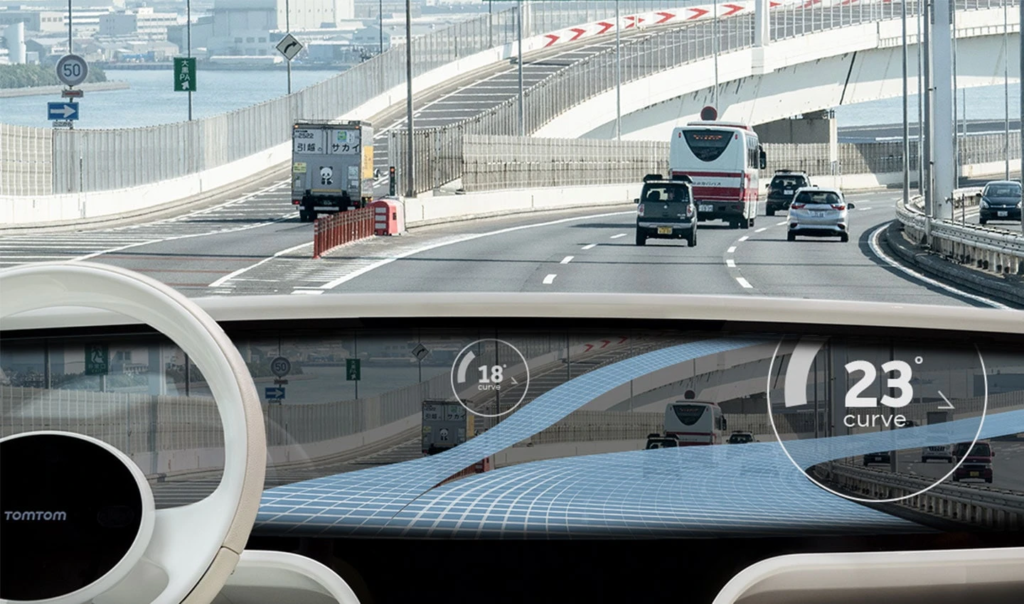
Adaptive Cruise Control (ACC) represents a significant advancement in driving technology, offering a blend of convenience and safety by maintaining safe distances between vehicles automatically. This innovative system builds on traditional cruise control by incorporating advanced sensors and algorithms to adjust a vehicle’s speed based on traffic conditions. Understanding how Adaptive Cruise Control works, its benefits, and its limitations can help drivers make the most of this technology while ensuring a safer driving experience.

1. How Adaptive Cruise Control Works
Adaptive Cruise Control uses a combination of sensors, cameras, and radar to monitor the traffic ahead and adjust the vehicle’s speed accordingly. Here’s a detailed look at how ACC operates:
- Sensors and Radar: ACC systems are equipped with radar and sometimes cameras mounted on the front of the vehicle. These sensors continuously scan the road ahead to detect the distance and speed of vehicles in the same lane.
- Speed Adjustment: When the ACC system is activated, the driver sets a desired speed, just like with traditional cruise control. However, unlike standard cruise control, ACC monitors traffic conditions and automatically adjusts the vehicle’s speed to maintain a safe following distance from the vehicle ahead.
- Braking and Acceleration: If the sensors detect that the vehicle in front is slowing down, the ACC system will reduce the car’s speed by automatically applying the brakes or reducing engine power. Conversely, if the road clears, the system will accelerate back up to the pre-set speed. This process ensures that the vehicle maintains a consistent and safe distance from other vehicles.
2. Benefits of Adaptive Cruise Control
Adaptive Cruise Control offers several key benefits that enhance driving comfort and safety:
- Enhanced Safety: By maintaining a safe following distance, ACC reduces the risk of rear-end collisions caused by sudden stops or slowdowns. It helps prevent accidents by keeping drivers from having to constantly adjust their speed in response to traffic changes.
- Reduced Driver Fatigue: Long drives can be tiring, especially when dealing with frequent speed adjustments and traffic changes. ACC reduces the need for manual speed adjustments, making highway driving less stressful and more comfortable.
- Improved Traffic Flow: ACC can contribute to smoother traffic flow by reducing sudden speed changes and maintaining consistent distances between vehicles. This can help prevent traffic congestion and improve overall driving efficiency.
- Convenience: With ACC, drivers can enjoy a more relaxed driving experience, especially on long journeys or in heavy traffic. The system automatically handles speed adjustments, allowing drivers to focus on other aspects of driving.
3. Limitations of Adaptive Cruise Control
While Adaptive Cruise Control offers significant advantages, it also has limitations that drivers should be aware of:

- Limited Performance in Certain Conditions: ACC may struggle to perform effectively in poor weather conditions, such as heavy rain, snow, or fog. Reduced visibility and sensor obstructions can affect the system’s ability to detect vehicles accurately.
- Not a Substitute for Driver Attention: Although ACC enhances safety, it does not replace the need for driver attentiveness. Drivers should remain vigilant and be prepared to take control of the vehicle if necessary, especially in complex or rapidly changing traffic situations.
- Over-reliance Risk: Some drivers may become overly reliant on ACC, leading to reduced attention to road conditions and potential hazards. It’s important to use ACC as a supplementary tool rather than a replacement for active driving engagement.
- System Limitations: ACC may not always handle every driving scenario perfectly, such as navigating sharp curves or complex intersections. Drivers should be aware of these limitations and adjust their driving as needed.
4. Best Practices for Using Adaptive Cruise Control
To maximize the benefits of ACC and ensure safe operation, consider the following best practices:
- Set Appropriate Following Distance: Adjust the ACC settings to maintain a following distance that suits your driving preferences and the traffic conditions. Most systems allow drivers to choose from several distance settings.
- Monitor Road Conditions: Remain attentive to road conditions and potential hazards, even when using ACC. Be prepared to override the system if necessary, particularly in challenging driving situations.
- Keep Sensors Clean: Regularly check and clean the radar and camera sensors to ensure optimal performance. Obstructions such as dirt or snow can affect the system’s accuracy.
- Understand System Limitations: Familiarize yourself with your vehicle’s ACC capabilities and limitations by reading the owner’s manual. Understanding how the system works and its potential shortcomings can help you use it more effectively.
5. Conclusion
Adaptive Cruise Control is a valuable advancement in automotive technology that enhances driving safety and convenience by automatically maintaining safe distances between vehicles. By understanding how ACC works, its benefits, and its limitations, drivers can make the most of this technology while ensuring a safer and more comfortable driving experience. As automotive technology continues to evolve, ACC remains a key feature in improving overall road safety and reducing driver fatigue.





